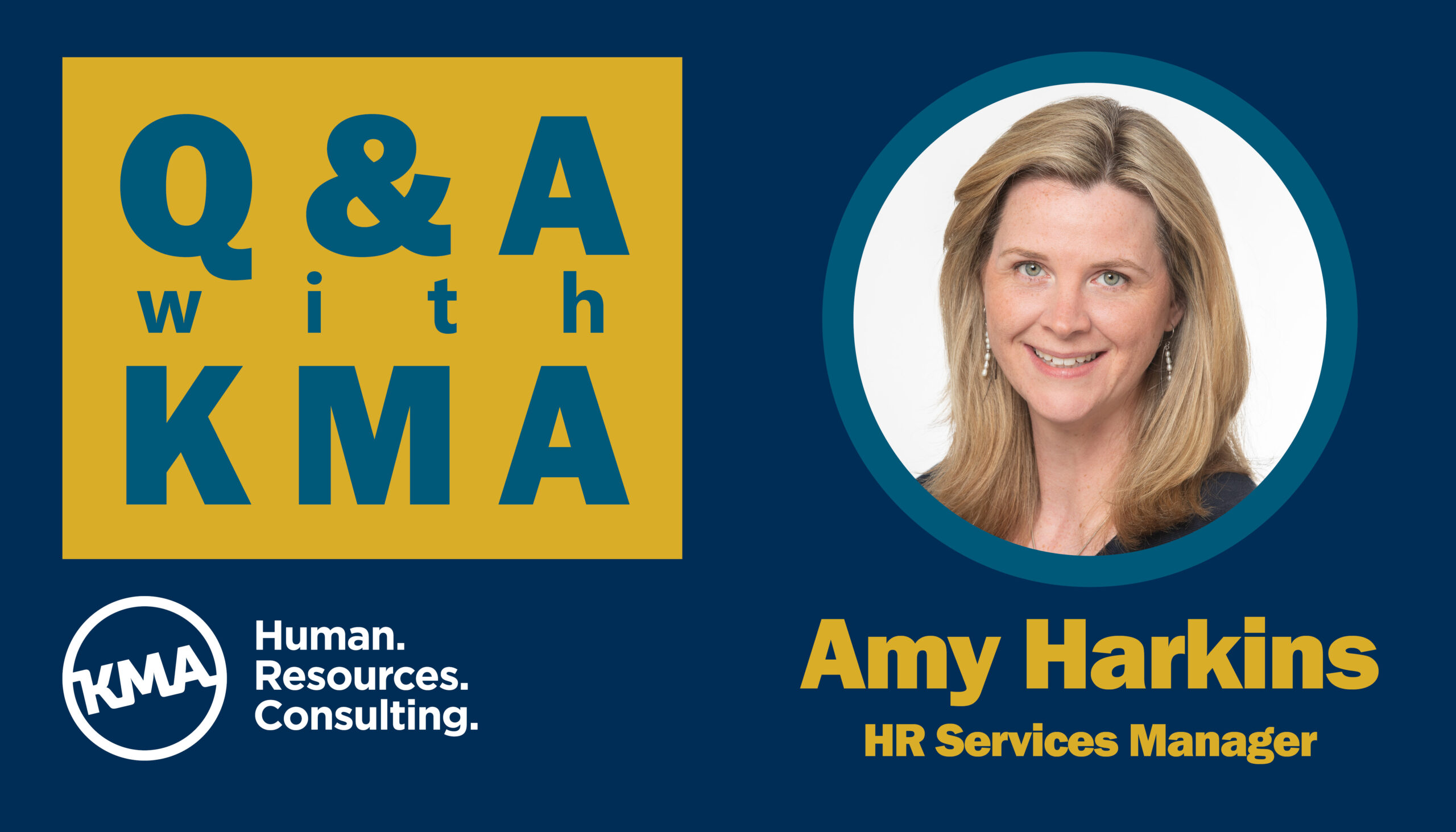
We recently sat down with Amy Harkins, Human Resources Services Manager at KMA, to talk about why so many companies are working to build better culture. Here’s that conversation.
Amy, you work with many clients to assess and improve their culture. Why is company culture getting so much attention these days?
Just one more impact from the pandemic, it made us question and change a lot of things around how we conduct business and where businesses and employees are willing to compromise. It challenged us both as businesses and employees to get creative, take risks, be more flexible, and reduced our fear of the unknown. Increased self-worth and low unemployment gives employees more leverage than ever, and they’re not afraid to look at all their options. They want to work for a company that cares about them as people, that listens to them and values the contributions they bring, that wants to develop their talents and bring out the best in them. They want to see that their leaders and organization really walk the walk. So just stating that you have a culture of work life balance, for example, isn’t good enough if you don’t have the policies and practices in place to support that. Employees can see right through any disconnect between what you say and what you do. They’re smart, that’s why you hired them!
What are the different elements that make up a company’s culture?
The company’s mission, vision and values are a core component of culture. Employees want to do meaningful, purposeful work. It is important for employees to know that their values are aligned with the company’s values. Ultimately, it’s about how employees are treated and if their needs are being fulfilled. Is there mutual respect? Does the company have a culture of open communication and listening? Do employees feel supported as whole persons and are their opinions valued? Are their personal and family needs being met? Are their professional goals being nurtured? Do you invest in the technology and resources necessary for them to be productive and successful? It’s both policy and ethos. It’s not easy to describe all the parts and pieces that make up culture – but you definitely know when it’s in destructive and damaging territory!
How do you go about assessing the culture you have?
The most important piece to this is listening. You can do regular surveys or pulse checks of all the employees in your organization. But to get accurate responses, employees need to feel safe that they will be heard, that there won’t be any negative repercussions for their honest feedback. They need to be able to trust the process, and that there will be follow through. The worst thing you can do is conduct a survey and never act on the information. This is where KMA can shine in supporting a client. We can come in as a neutral third party, helping employees feel they can be totally honest without judgement. Then we know we’re getting real data for our clients. We can help compile the data, and develop a report with our findings and recommendations. And then you have a roadmap and can develop some goals around improving your culture. But first and foremost, you need the data!
What are some of the most effective ways businesses can positively impact culture?
Here’s my laundry list: good communication; listening to employees; providing opportunities for growth and development; setting clear expectations; offering flexibility where possible; creating an environment that’s transparent, safe, vulnerable, and open, and treating everyone equally and respectfully.
I always think of Dan Pink’s Drive, and the three things that motivate us: autonomy, mastery and purpose. As an employer, how are you providing these things to your employees?
What are the key benefits to having a good culture?
A strong employer brand for recruiting and retention, engaged and committed employees doing their best work, and ultimately, a highly productive workforce and a company that can achieve its business goals. Really healthy stuff!
Thanks for your insights on culture, Amy!
